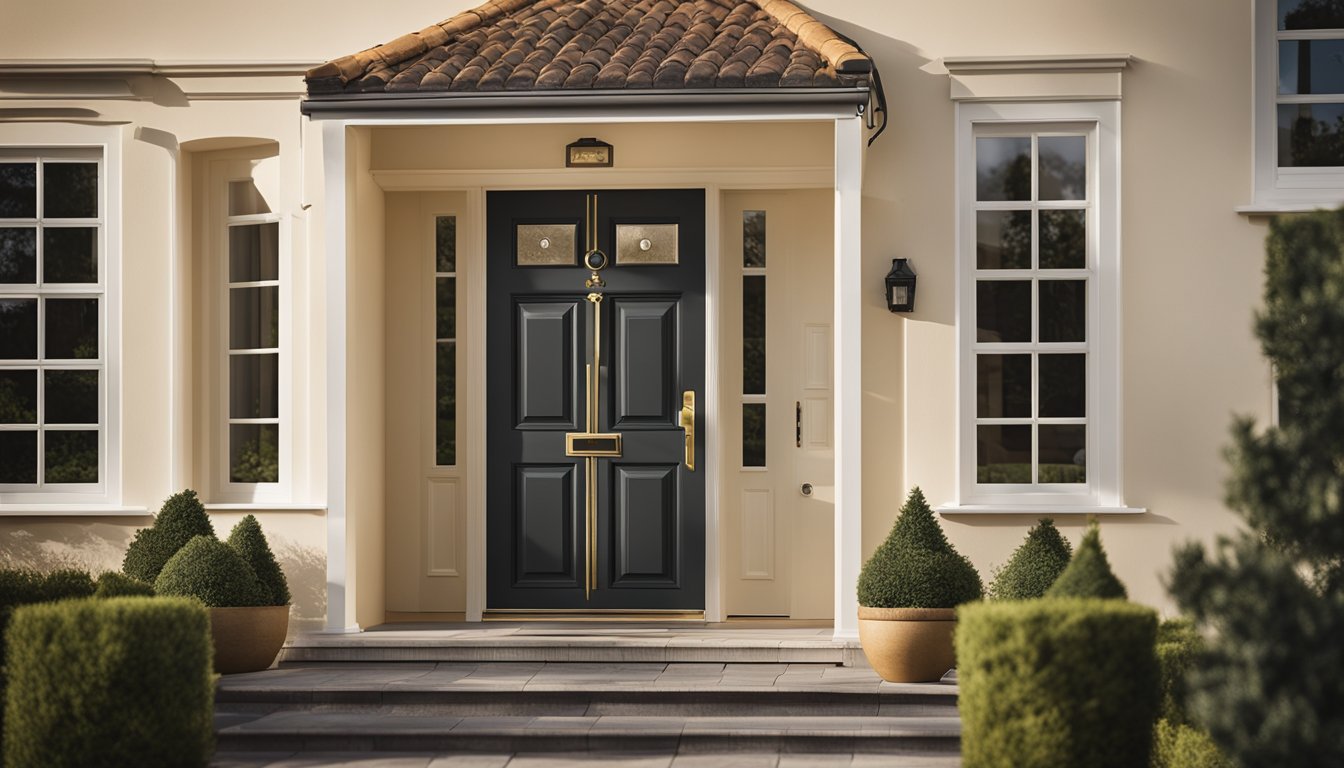Late updated: 01 Apr 2025 14:04
Written by: Elena Prescott
Essential Lock Safety Tips For Families: Ensuring Secure and Peaceful Homes
Ensuring the security of our homes is a priority for all families, particularly those with children. Mastering essential lock safety tips empowers us to create a safer environment for our loved ones. Whether we are choosing robust locks or teaching our children the importance of securing doors, these practices provide peace of mind and a solid layer of protection.

Locks play a crucial role in safeguarding our home, but it is equally important to make lock safety a part of our daily routine. Sharing the responsibility of locking up with every family member ensures that everyone, including the smallest ones, embraces this vital habit. Understanding how to use access codes or alarms adds an additional layer of defense, enhancing our home's security.
Let's explore these strategies further to ensure our family's safety and cultivate a secure home environment for our children to grow. By adopting these measures, we can effectively minimise potential risks and foster a sense of safety and security that we all deserve.
Key Takeaways
- Essential lock tips enhance home security.
- Daily lock routines create a protection habit.
- Family involvement promotes safety awareness.
Key Lock Safety Features for Homes with Children
When considering lock safety features for homes with children, evaluating lock durability and childproofing measures are pivotal. We must ensure these features effectively protect and prevent accidents without compromising ease of use for adults.
Evaluating Lock Durability and Strength
In our homes, ensuring the durability and strength of locks is essential for security and peace of mind. Locks should be made from robust materials like steel or brass, which resist tampering and wear. It's vital that locks endure regular use, especially in busy family households.
When assessing strength, consider multi-point locking systems. These mechanisms engage multiple bolts when locked, increasing difficulty for unauthorised entry. Deadbolts also provide an extra layer of security. Regular maintenance checks are helpful to confirm lock components remain in good condition, preventing deterioration and failure.
We must also avoid locks with easily manipulated parts, reducing risks associated with potential tampering. Opting for locks certified to industry standards can offer reassurance in meeting stringent safety criteria. Consistent evaluations of these features ensure our locks remain a reliable line of defence.
Childproofing and Accident Prevention
Childproofing goes beyond selecting durable locks; it involves integrating additional safety features to protect our young ones. Installing safety gates ensures children are restricted from accessing certain areas where they may meddle with locks.
We can also utilise outlet covers near door mechanisms, preventing children from inserting objects that could disrupt lock function. For doors with handles, using handle locks or lever locks can deter children from opening doors unsupervised.
Regularly involving children in discussions about safety cultivates awareness from a young age. Instruction on not playing with locks reinforces safe habits. By combining mechanical solutions with educational approaches, we reduce the likelihood of accidents and maintain a safe environment for our families.
Implementing Daily Lock Safety Routines

Our focus on daily lock safety routines enhances family security. By integrating these routines into everyday life, we ensure a safer environment for everyone, whether it's during the rush of the school morning or when children are home alone.
Securing the Premises Before School
It’s essential to establish a habit of securing all entry points every morning. Doors and windows should be checked to confirm they are locked before leaving. This routine is particularly vital during the busy back-to-school period.
We should remind family members, particularly children, to double-check the locks. Implementing access codes instead of keys offers security and convenience. A morning checklist can help ensure everything is secure and reduce the chances of oversight.
Establishing Safety Protocols for Times When Home Alone
When children are home alone, we must instil a sense of security by teaching them not to open doors to strangers. A reliable lock system with intercom or camera support provides an extra layer of safety.
Children should know emergency contact numbers and have a plan for unexpected situations. We can educate them on basic safety rules, ensuring they feel confident in managing the front door locks securely and responsibly.
Smoke Alarm Checks and Integration with Lock Systems
A functional smoke alarm is crucial for household safety, integrating it with our lock system forms a robust security shield. Regular testing ensures the alarm is operational. Monthly checks are advisable.
Integrating smoke alarms with a smart lock system allows for automated unlocking during emergencies. This feature provides a quick escape route in the event of a fire. It’s our responsibility to ensure these systems work seamlessly together, enhancing family safety.
Frequently Asked Questions

Let's explore important strategies for ensuring that our homes remain safe for our children. From indoor precautions to outdoor vigilance, there are practices that can greatly enhance safety. Addressing specifics can help prevent common accidents.
How can parents ensure a safe environment at home for children?
We can start by installing safety locks on cabinets that contain dangerous items like cleaning fluids. Securing all entry points by keeping doors locked is also a key measure to prevent children from wandering unattended.
What precautions should be taken to protect toddlers when they are outside?
We must always supervise toddlers during outdoor play. Installing fences around pools and securing playground equipment with soft surfaces can minimise risks.
Which kitchen safety practices are essential to teach young children?
It's crucial for us to educate children about the dangers of hot surfaces and sharp objects. We can use stove guards and keep knives out of reach to further increase kitchen safety.
What strategies can be employed to prevent accidents in the bathroom for kids?
In the bathroom, placing non-slip mats can prevent falls. It's also important to secure any cabinets containing medicines, as well as maintaining a water heater setting that prevents scalding.
What are the general home safety rules that students should be aware of?
Students should be informed about the importance of locking doors, managing electrical appliances safely, and the need to be cautious around strangers. These practices help maintain a secure home environment.
How can we effectively safeguard children from household hazards, such as the oven?
Installing oven locks and teaching children to steer clear of the oven when it's on ensures safety in the kitchen. Educating them on the risks associated with heat can also build awareness.
